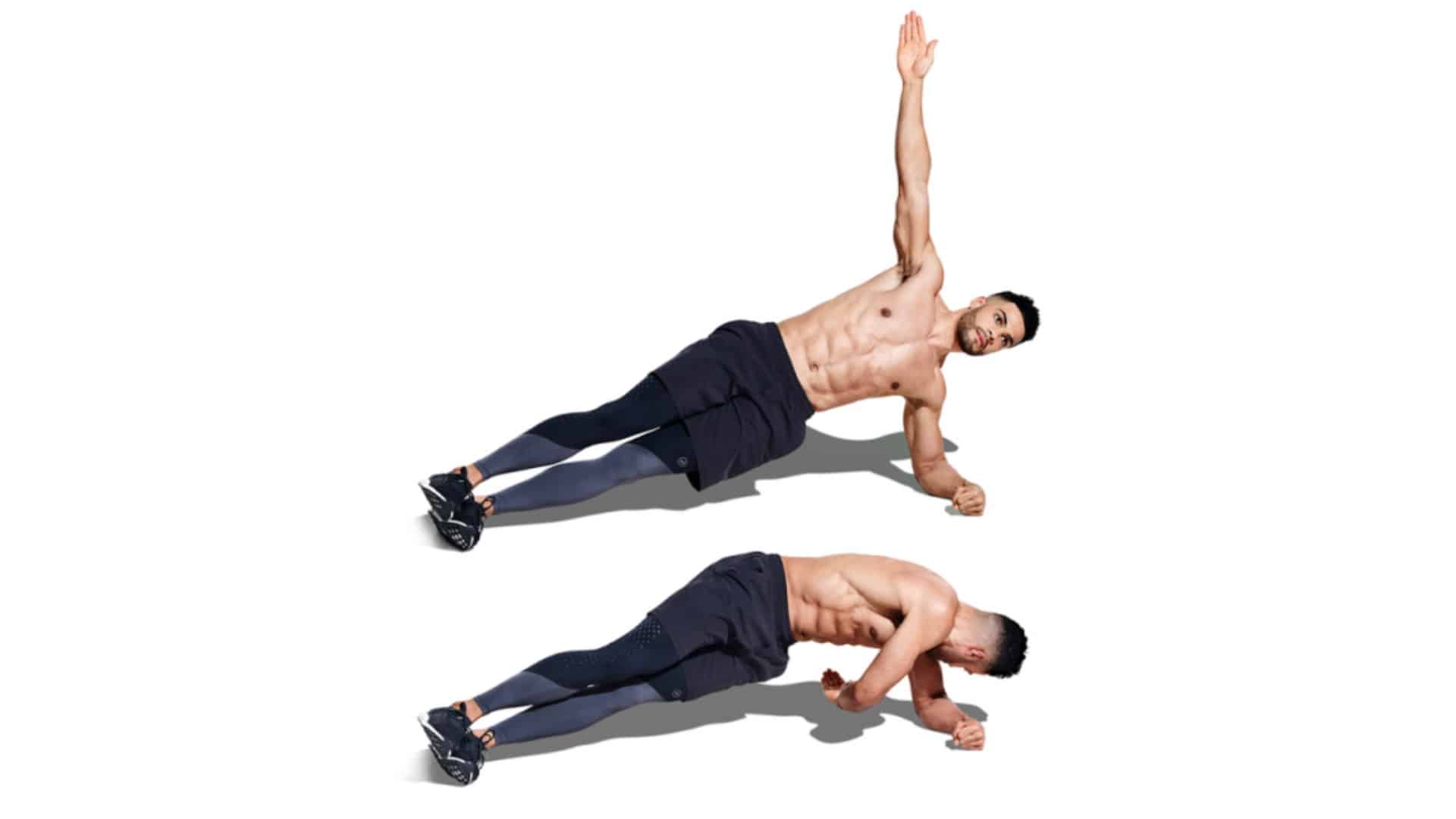If you want to build stronger abs and obliques, add this side plank variation to your workout routine.
The side plank rotation, also known as the plank twist, is a brilliant bodyweight exercise that helps you develop the strength and stability of your core.
It combines your standard side plank with rotation into one move that will challenge your balance, tone up your waist, and strengthen your core.
This move doesn’t just work your abs; it’s a total-body challenge that strengthens your shoulders and hips while giving your obliques extra attention.
To Lose Fat, Know Your Fat Lose Calories Requirements

Side Plank Rotation Muscles Worked
The side plank twist exercise develops core and shoulder strength & stability, and may even help improve spinal mobility.
- The primary areas affected are the obliques and back, including the erector spinae and the rectus abdominus, and the transverse abdominus.
- In addition, they train your serratus anterior, trapezius (traps), rhomboids, shoulder muscles of the upper body, and the gluteus maximus and hip flexors.

Know More: Side Plank: Benefits, Variations, Muscles used, Tips
How To Do Side Plank Rotation

- Lie on your right, legs extended. Prop yourself up on your elbow, directly under your shoulder.
- Stack your feet (or stagger them if you need more stability).
- Engage your core and lift your hips off the ground, forming a straight line from your head to your heels.
- In this position, only your right-hand palm and the outer side of your left foot are making contact with the floor.
- Extend your top arm straight up towards the ceiling.
- Slowly lower your top arm, reaching it under your body. Rotate your torso as you reach, like you’re trying to touch the floor behind you.
- Reverse the movement, bringing your arm back up to the ceiling. As you do this, rotate your chest back to face the side.
- Do 10-15 rotations on one side before switching to the other side. Complete 2–3 sets per side.
Know More: 18 Abs Exercises You Can Do at Home Without Equipment
Tips and Techniques
- Keep your neck neutral – don’t crane or tuck your chin.
- Try to twist as far as you can. The goal is to twist until your chest is parallel to the ground.
- Ensure your shoulder is directly above your elbow and your hips are stacked in a straight line with your shoulders and ankles.
- Keep your abs and glutes tight throughout the movement.
- Avoid rushing through the rotations. Fast, uncontrolled movements can compromise form and increase the risk of injury.
- Once you’ve mastered the basic side plank rotation, try adding variations like holding a weight, using a stability ball, or incorporating leg lifts for added challenge.
Side Plank Rotation Modifications
Make It Easier
- If twisting is a bit too much right now, that’s okay. Focus on your side plank first.
- Instead of keeping your legs straight, bend your knees and place them on the ground. This will give you more stability and make the rotation less intense.
- Start with small rotations and gradually increase the range of motion.
Make It Harder
- Add a challenge by holding a lightweight (like a dumbbell or a plate) in your top hand as you rotate.
- Take it up a notch by placing your feet on an elevated surface like a bench or a step.
References
- Gottschall JS, et al. (2013). Integration core exercises elicit greater muscle activation than isolation exercises. DOI:
http://doi.org/10.1519/JSC.0b013e31825c2cc7 - Tvrdy, Douglas PT, DPT, CSCS. The Reverse Side Plank/Bridge: An Alternate Exercise for Core Training. Strength and Conditioning Journal 34(2):p 86-88, April 2012.

Manish is a NASM-certified fitness and nutrition coach with over 10 years of experience in weight lifting and fat loss fitness coaching. He specializes in gym-based training and has a lot of knowledge about exercise, lifting technique, biomechanics, and more.
Through “Fit Life Regime,” he generously shares the insights he’s gained over a decade in the field. His goal is to equip others with the knowledge to start their own fitness journey.
